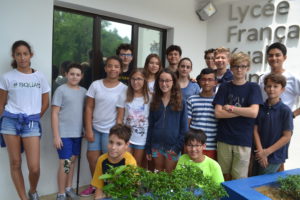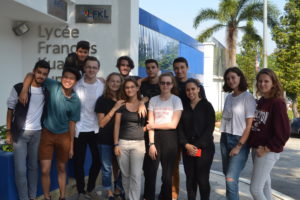Civic rights in the lower and upper secondary school bodies
The class representatives: role and remit
- The two class representatives are their class’ spokespeople. They have a seat at the Teachers’ conference. They must submit the pupils’/students’ questions to the educational team, particularly regarding the educational operating of the class, the organisation of the class life hours and the study course choice. They also have a duty to inform their classmates by providing them with the answers to their questions and the announcements made during the Teachers’ conference.
- The class representatives also have a duty of confidentiality, i.e. they cannot make public personal information they have been entrusted with.
- A representative cannot be dismissed.
- All of pupils’ and students’ representatives of a school are gathered during a general assembly.
- The representatives must benefit from a training course preparing them to fulfil their role.
Elections
- The elections are held before the sixth week of the school year ends. An information session on the representatives’ and Teacher’s conference’s roles must be organised prior.
- Each pupil/student can vote and be elected. No pupil/student can be prevented from running regardless of their behaviour.
- Each candidate must give the name of their stand-in. The pupils/students thus vote for an incumbent-stand-in team.
- Each pupil/student votes for one candidate only. The election comprises of two rounds.
If, at the first round, a candidate obtains more than half the votes, they are elected. A second round is then held to designate the second representative.
If nobody obtains an absolute majority after the first round, a second round is held and the two candidates with the highest number of votes are elected.
- A pupil/student who is not running can still be elected if they obtain enough votes. They can choose to refuse the role.
- In case of a draw, the youngest pupil/student is declared elected.
- Among the upper and lower secondary representatives, the pupils and students then vote for two who will have a seat at the School Committee (CE)
What is the CVLC?
 The CVLC is an exchange and dialogue body between the pupils and between the pupils and the members of the educational community. It is therefore an instrument of expression and proposition for the pupils. This body can make suggestions on:
The CVLC is an exchange and dialogue body between the pupils and between the pupils and the members of the educational community. It is therefore an instrument of expression and proposition for the pupils. This body can make suggestions on:
- issues relating to the general principles of the organisation of the studies, to the organisation of the school time, the drafting of the school project and rules and regulations as well as issues relating to the material and the canteen;
- the terms and conditions of the organisation of personal work and pupils’ monitoring as well as the linguistic and cultural exchanges in partnership with foreign schools;
- the actions aiming at improving the pupils’ well-being and the school atmosphere and promoting participative practices;
This is mostly about facilitating cooperation and cohesion between the pupils and reinforcing the sense of belonging to the school.
- the implementation of the artistic and cultural education course, the civic course, the “Avenir” (Future) course and the health education course.
- the pupils’ representatives’ training.
In its area of expertise, the CVC is a space where the lower secondary pupils’ word is thought of and analysed, where words are transformed into actions and annual projects facilitating the cooperation between the pupils (organisation of sport or cultural events, moments of togetherness, arrangement of the pupils’ living areas, etc.) but also between them and the adults from the educational community are defined. The CVC also enables to train the pupils in the operation of a collegial body which is a part of the school’s life.
 The CVLC is compulsorily consulted on a certain number of issues linked to the school’s life:
The CVLC is compulsorily consulted on a certain number of issues linked to the school’s life:
- the general principles of the organisation of the studies and school time,
- the drafting and modification of the school project and rules and regulations,
- canteen issues,
- the general terms and conditions of the organisation of personal work and students’ personal monitoring
- the means to help the students’ change their study course,
- students’ support and help,
- the linguistic and cultural exchanges in partnership with European and foreign schools,
- information linked to the study course choice, school and university studies and professional careers,
- health, hygiene and safety,
- the arrangement of the living areas dedicated to the upper secondary students,
- the organisation of sport, cultural and extracurricular activities.
It can also make suggestions on:
- the students’ representatives’ training,
- the conditions of use of the upper secondary funds.
Managed by the Headmaster and supported by the Chief Education Adviser, these two bodies comprise of 10 pupils/students and their stand-ins, teachers, administrative staff and parents.
They meet at least once per term, generally before the School Committee (CE). The elected Vice-chairman of the CVL is invited to attend the CE meeting to represent the CVL and report the body’s recommendations and projects.
CVLC Reports



